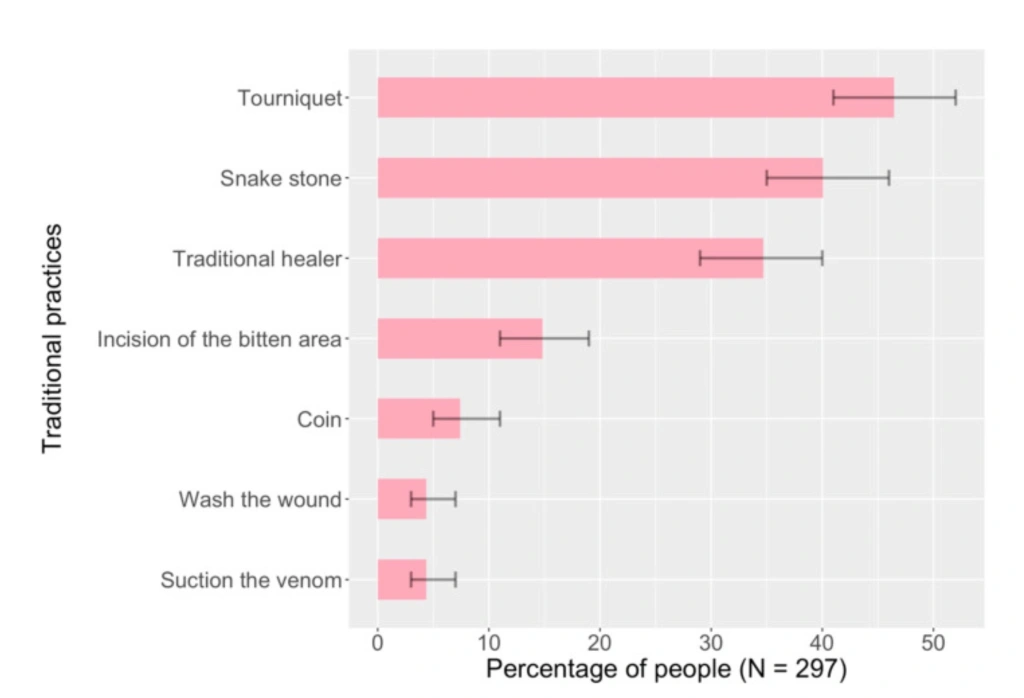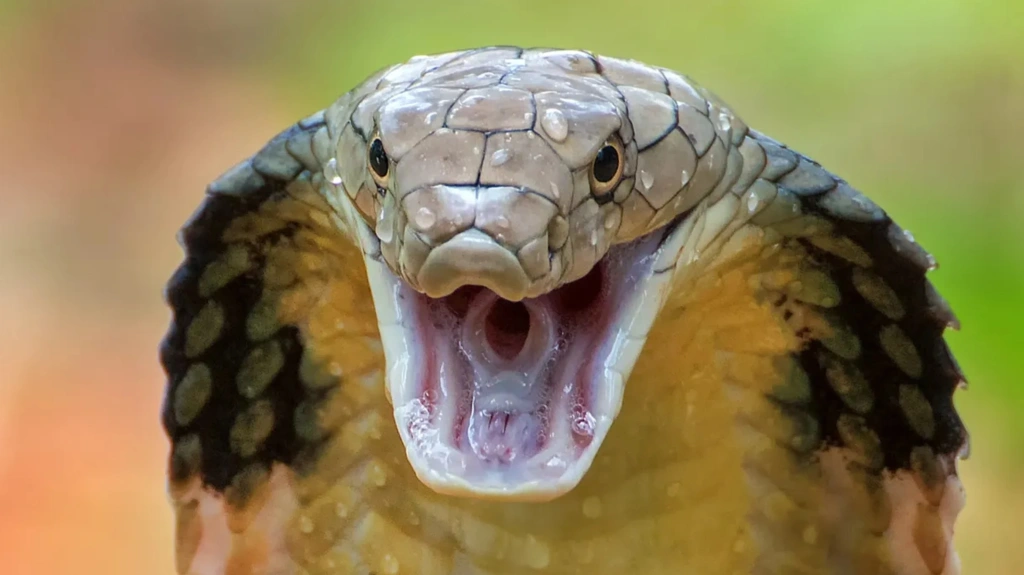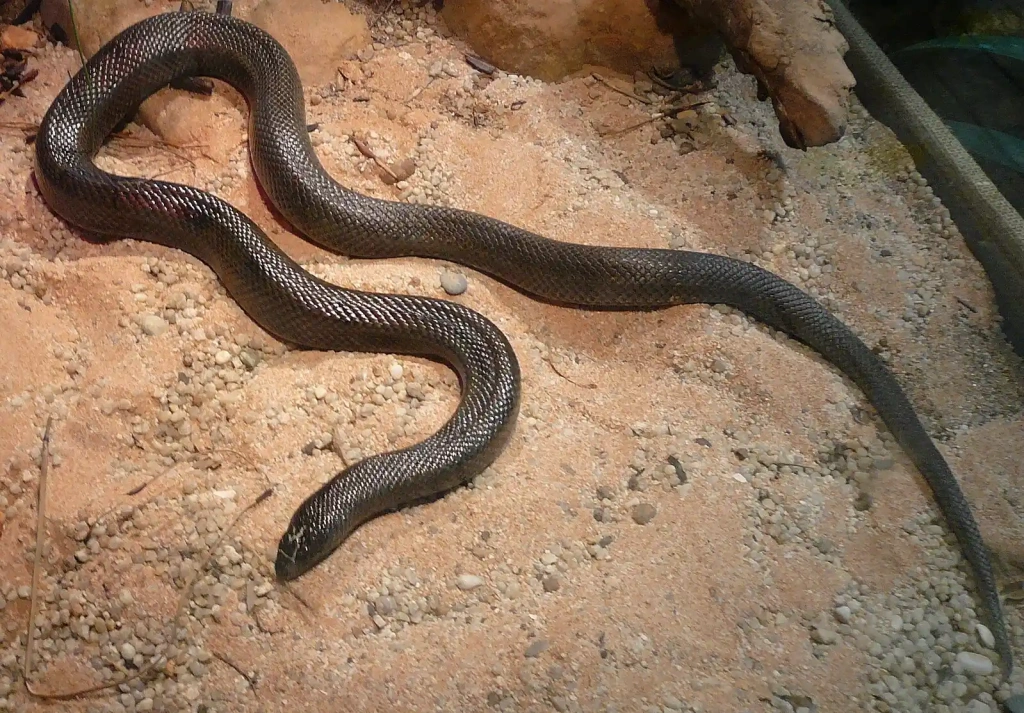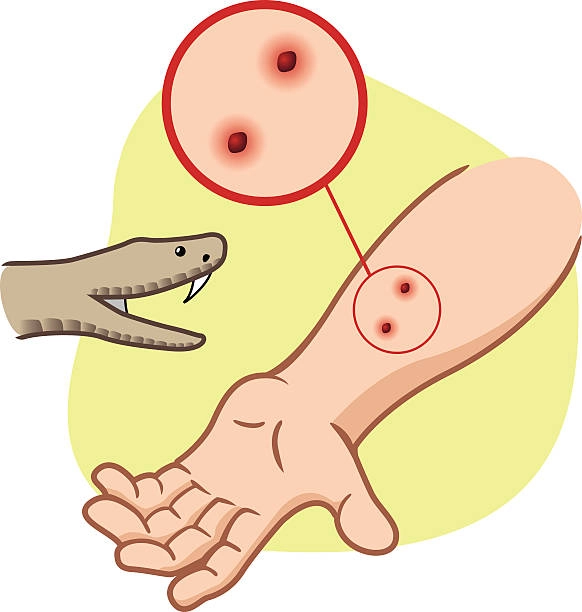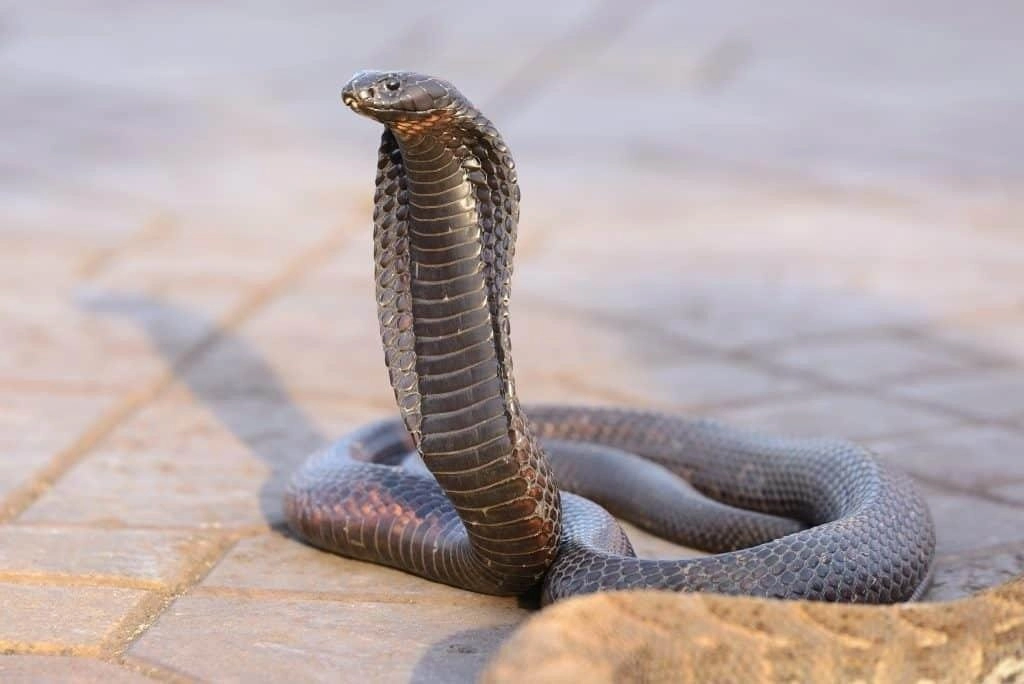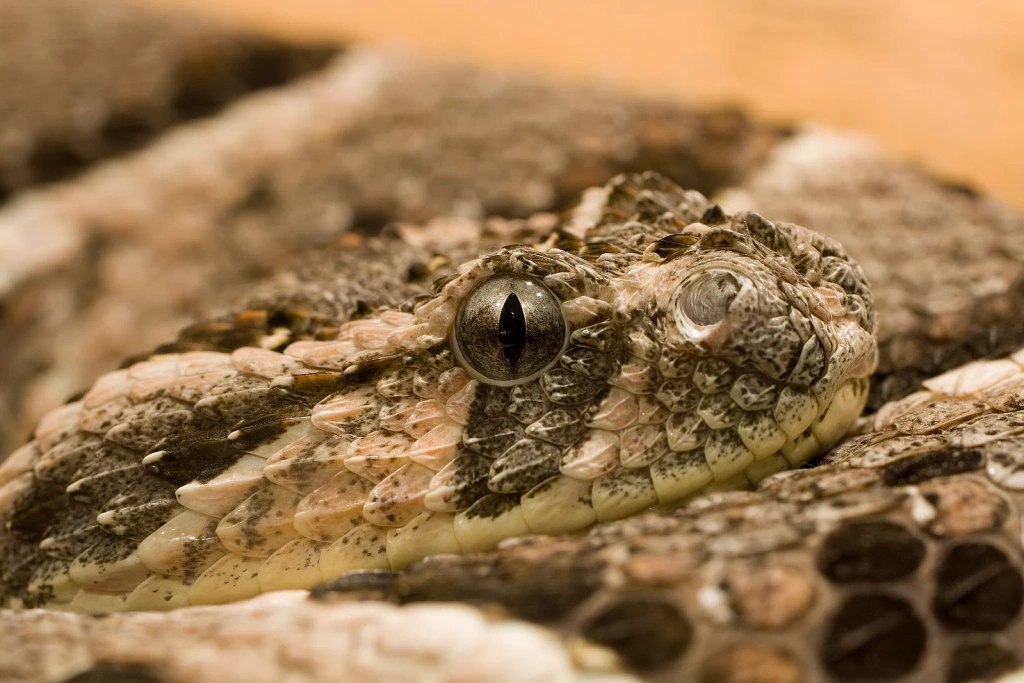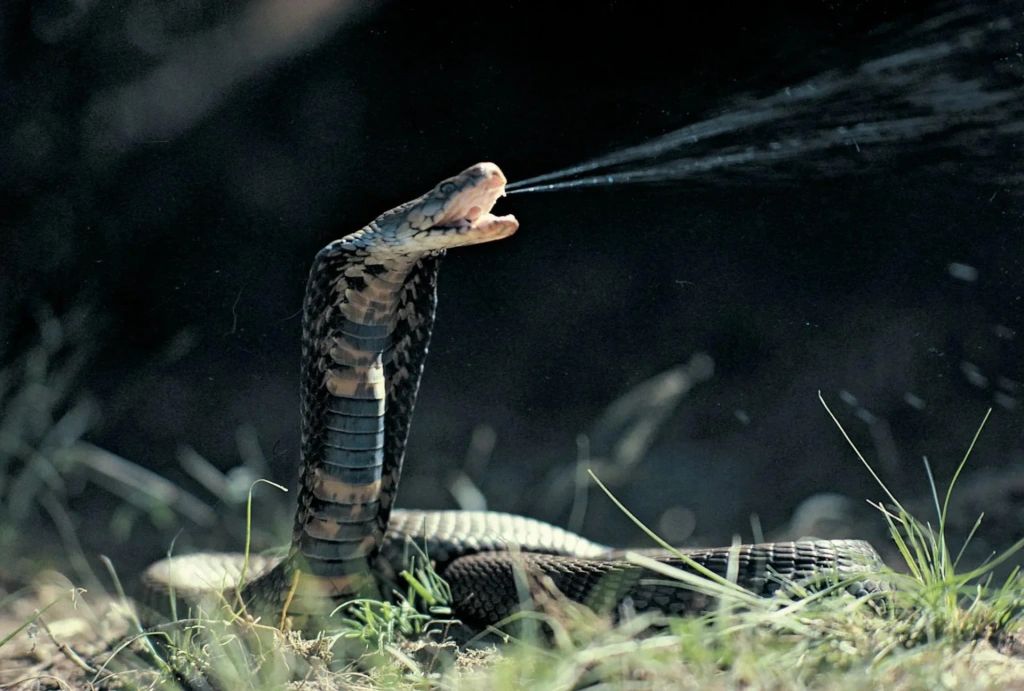First and foremost, stay calm. Take a deep breath and seek medical attention by getting to a clinic as soon as possible. Venom primarily spreads through the lymphatic system, not the bloodstream. To slow down this process, follow these steps:
1. Try to keep the bitten limb still. Active movements increase lymph flow, which causes the toxin to spread more rapidly through the body.
2. Remove any jewelry or tight clothing near the bite area that could restrict swelling.
3. Cover the bite and the surrounding area with a loose bandage. Do not use a tourniquet! The bandage should be loose. If you don't have a clean cloth, leaving the wound uncovered is better to avoid infection.
4. After that, try to reach the nearest hospital that has antivenom as soon as possible. Depending on your location, contact one of the medical centers listed below. Before heading there, call them to confirm whether antivenom is currently available.
Where to seek help?
What should you avoid doing in case of a snake bite?
- Applying a tight tourniquet. Evidence shows that it can make the situation worse. A tourniquet can stop blood flow, which potentially leads to gangrene. By the time the victim reaches a hospital, the limb may require amputation. A much safer and more effective option is a soft compression bandage.
- Making cuts at the bite site. This causes additional trauma, greatly increasing the risk of infection in the wound.
- Sucking out the venom. Venom can enter the body through both the bite and the mucous membranes in the mouth, increasing the risk of infection.
- Consuming alcohol. While it may have mild anesthetic and calming effects, alcohol impacts circulation, causing the venom to spread more quickly and worsen the overall condition.
In Tanzania, as in many other regions of Africa, locals still practice traditional methods of treating snake bites instead of seeking medical help. This is confirmed by data from a 2022 study. Such behavior can lead to many avoidable deaths.
In local communities, it is common to cut and wash the bite before seeking medical help. In other cases, a tight tourniquet is applied to the victim, and people attempt to extract the venom by placing so-called , charcoal, or 50 or 100 Tanzanian shilling coins on the wound.
Roughly a third of respondents said they turned to traditional healers, who used herbal mixtures or recommended treating the wound with milk. Some treat bites with ash from burned snakes, while others apply kerosene to the wound. Some have even recommended to eat a fresh dog’s ear, believing it helps draw out venom. Additionally, some Tanzanians believe that placing a stone in one's cheek while working in the field can help; if bitten by a snake, pressing the stone to the open wound will treat the bite.
If someone avoided serious consequences after using one of these methods, it was likely because the bite was non-venomous or involved only a small amount of venom. Remember: if a snake bites you, the only right thing to do is get to a hospital as quickly as possible so you can receive the proper antivenom treatment.
Difference between venomous and non-venomous snake bites
According to World Health Organization data, 5.4 million people worldwide are affected by snake bites each year. About 1.8 million of them receive venomous bites, and only around 4.5% of those die. However, falling victim to a dangerous snake in Tanzania is very rare. Most snakes pose no threat or prefer to flee as quickly as possible when encountering a human.
It’s difficult to distinguish a nonvenomous snake from a venomous one based on appearance, especially when you are scared. In Tanzania alone, around 150 species of snakes exist, each with its own coloration, making it nearly impossible to remember which is which. The main distinguishing feature of a venomous snake is its two large, long fangs with internal channels through which it injects venom.
A venomous snakebite typically leaves two large, red puncture marks located a short distance apart. If that is not the case, the reptile is likely non-venomous. However, this does not mean the bite should be ignored. Regardless of the bite's appearance, you should see a doctor. If the snake has pierced the skin, it could have infected the wound, potentially introducing tetanus bacteria. In this case, a tetanus booster will be necessary.
Specialists distinguish two main types of snake bites:
- Dry bites occur when a snake does not release venom. Venomous snakes can also deliver these bites. The snake does not always need to use its precious toxin to protect itself and scare off an intruder. The explains this rational behavior of reptiles.
- Venomous bites occur when a snake injects venom during the bite, which can result in severe poisoning and potentially death. Furthermore, the snake can regulate the amount of venom injected with each attack.
How does snake venom affect the human body?
Venoms from different snakes contain various combinations of toxic enzymes. However, based on their effect on the body, they are divided into three main types.
Neurotoxic venoms, found in sea snakes, cobras, or coral snakes, mainly target the nervous system. A person bitten may experience muscle weakness, vision problems, in various parts of the body, and trouble speaking or breathing. If the venom continues to spread, it can lead to seizures, muscle paralysis, and, in severe cases, respiratory failure and death.
Cytotoxic venoms are found in pit vipers and, for example, the brown recluse spider. These toxins interfere with cellular metabolism and can lead to tissue necrosis. A bite like this causes severe pain and may result in sepsis or gangrene.
Hemotoxic venoms are also typical of vipers. These venoms affect circulation and damage blood vessel walls. They generally have a two-phase effect on the body: first, they cause a sudden increase in blood clotting, followed by a sharp decrease and eventual loss of clotting ability. Without prompt medical attention, the person risks dying from blood loss, as blood may not only leak from the bite marks but also from the mouth, nose, and even from old, previously healed wounds.
In most cases, a snake bite, whether venomous or not, causes sharp, worsening pain and redness at the injury site. Red streaks may appear along the lymphatic vessels if the toxin has entered the body. The victim might also experience symptoms such as dry mouth, intense thirst, headaches, drowsiness, vomiting, and digestive upset. Rarely, people have a severe allergic reaction, or anaphylaxis, expressed in breathing problems, skin reactions, throat or tongue swelling and others.
How are snake bites treated in a Tanzanian hospital?
Doctors in Tanzanian clinics use antivenoms. However, not every hospital has these medications! Earlier in the article, we provided recommendations for seeking help.
The Ministry of Health and Social Welfare of Tanzania has released a detailed guide for treating snake bites in hospitals. The instructions for medical professionals include the following sequence of actions:
- Once the victim arrives at the hospital, a doctor will thoroughly clean the puncture wounds, evaluate the severity of poisoning, and, if necessary, administer antivenom. The standard protocol suggests administering 80–100 ml of polyvalent antivenom, diluted in 500 ml of saline. The antivenom is administered slowly through an IV.
- The doctor will carefully monitor the patient's reaction to the medication and keep 100 mg of adrenaline ready just in case. If any side effects show up, the IV infusion will be paused, the patient will receive adrenaline, and the antivenom will be restarted an hour later.
- The antivenom dosage depends on the severity of the poisoning. Typically, one vial is enough, but a second can be given if needed. The dosage is the same for both adults and children.
- Necrotized tissue, if present, can only be removed once normal blood clotting has been restored. Doctors use a special test to assess clotting. Even without obvious symptoms, several tests spaced 3 to 6 hours apart should be done before discharging the patient.
- During treatment, the following are contraindicated: analgesics (such as aspirin, ibuprofen, and other blood-thinning medications), antihistamines, and bloodletting.
- If venom gets into the eye, it will be thoroughly rinsed, and doctors will recommend keeping the eye shaded until the redness disappears. They’ll prescribe antibiotic eye drops and ointments to prevent a secondary infection.
The patient should stay on bed rest until fully recovered. Doctors will encourage plenty of warm fluids and apply heating pads to the patient’s hands and feet. In some cases, a slow intravenous blood transfusion may be done to help with blood clotting, reduce bleeding, and counteract the venom’s effects. Doctors may also prescribe medications to strengthen blood vessel walls, along with vitamins P, C, and B12. If there’s a risk of infection or sepsis, antibiotics will be given as well.
In conclusion
Not all snakes are dangerous, but it’s important to treat all of them with caution. Here are a few key things to keep in mind to prevent snake bites:
- Snakes are shy and tend to stay as far away from humans as possible. They rarely enter homes and certainly do not do so to attack people. Rather, they seek small rodents, their actual prey.
- The chance of getting bitten decreases if you wear thick leather boots and long pants and avoid walking through tall grass.
- A snake can only bite a person if it feels threatened. If you see a snake before you, instead of panicking, running, or freezing, just walk away calmly.
- If a snake bites you, stay calm and do not panic. Wrap the bite with a loose bandage and seek medical help as soon as possible. Venom usually acts slowly, so you’ll have time to reach medical care.
While snake bites can be dangerous, there’s no reason to fear or harm snakes. In fact, snake venom is a key ingredient in many important medical treatments.
For instance, venom from certain viper species is used to make blood-clotting medications, while cobra venom is used in pain relievers. Furthermore, snakes help control populations of rats, locusts, and other pests, making them incredibly valuable to agriculture.
All content on Altezza Travel is created with expert insights and thorough research, in line with our Editorial Policy.
Want to know more about Tanzania adventures?
Get in touch with our team! We've explored all the top destinations across Tanzania. Our Kilimanjaro-based adventure consultants are ready to share tips and help you plan your unforgettable journey.















